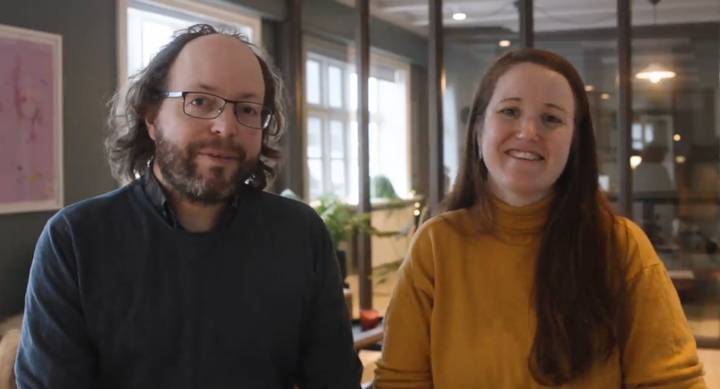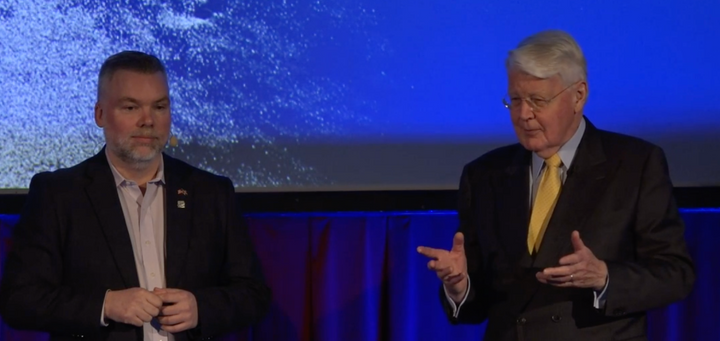A record number of startup investments: The 2016 Iceland Funding Report
http://code.jquery.com/jquery-3.1.1.min.js https://cdnjs.cloudflare.com/ajax/libs/Chart.js/2.3.0/Chart.min.jsAfter an incredible 2015, where Iceland contributed more than 10% of deployed venture capital in the Nordic region, 2016 shows continued growth in number of investments, while total dollars invested take a deep dive, mostly due to the lack of mega rounds. While 2015 had three investments amounting to $30m or more each, the biggest investment in 2016 was $11.4m (€10m) in Fintech startup Five degrees. Also, if you haven’t signed up for the Northstack Memo, we’re publishing some thoughts and predictions for 2017 this Monday. Sign up here.
This is our (from now on) annual funding report, analysing and discussing the high level trends in venture and early stage investing. We only include disclosed investments and translate all amounts to USD at an exchange rate close to the day of announcement. All data on the Nordics is from The Nordic Web. If you’re interested in more detailed analysis or the data, you can reach out to us.
New record in investments
Last year was the biggest year on record in regards to dealflow. We recorded 19 investments, 8 of which had foreign leads or participants. A good trend for the Icelandic ecosystem, that could easily reverse in 2017 if the VC industry isn’t able to raise enough new funds.
var ctx = document.getElementById(“fundingRounds”);
var options = {
tooltips: {
enabled: false
, mode: ‘single’
}
, scales: {
yAxes: [{
ticks: {
beginAtZero: true
}
}]
}
, hover: {
animationDuration: 1
}
, animation: {
duration: 500,
onComplete: function () {
var chartInstance = this.chart,
ctx = chartInstance.ctx;
ctx.font = Chart.helpers.fontString(Chart.defaults.global.defaultFontSize, Chart.defaults.global.defaultFontStyle, Chart.defaults.global.defaultFontFamily);
console.log(ctx);
ctx.fillStyle = ‘rgba(0,0,0,1)’;
ctx.textAlign = ‘center’;
ctx.textBaseline = ‘bottom’;
this.data.datasets.forEach(function (dataset, i) {
var meta = chartInstance.controller.getDatasetMeta(i);
console.log(meta);
meta.data.forEach(function (bar, index) {
data = dataset.data[index];
if (data == 0) {
data = ‘Undisclosed’;
} else {
data = data.toString();
data = data.replace(/B(?=(d{3})+(?!d))/g, “,”);
}
ctx.fillText(data, bar._model.x, bar._model.y – 5);
});
});
}
}
, responsive: true
};
var myChart = new Chart(ctx, {
type: ‘bar’
, data: {
labels: [‘2014′,’2015′,’2016’]
, datasets: [{
label: ‘Number of investments’
, data: [7, 17, 19]
, backgroundColor: ‘#09456C’
}]
}
, options: options
});
While the number of investments graph trends up-and-to-the-right, the amount invested isn’t as pretty. While still considerably higher than in 2014, last year was far behind 2015 (from now on termed the Monster Year of Icelandic Startup Investments), in terms of invested dollars. This is only due to three big rounds – $95m Verne Global, $45.6m CRI, and $30m CCP.
var ctx = document.getElementById(“amountInvested”);
var options = {
tooltips: {
enabled: false
, mode: ‘single’
, callbacks: {
label: function(tooltipItems, data) {
return ‘$ ‘ + tooltipItems.yLabel.toString().replace(/B(?=(d{3})+(?!d))/g, “,”);
}
}
}
, scales: {
yAxes: [{
ticks: {
beginAtZero: true
, userCallback: function(value, index, values) {
value = value.toString();
value = value.replace(/B(?=(d{3})+(?!d))/g, “,”);
return ‘$’ + value;
}
}
}]
}
, hover: {
animationDuration: 1
}
, animation: {
duration: 500,
onComplete: function () {
var chartInstance = this.chart,
ctx = chartInstance.ctx;
ctx.font = Chart.helpers.fontString(Chart.defaults.global.defaultFontSize, Chart.defaults.global.defaultFontStyle, Chart.defaults.global.defaultFontFamily);
console.log(ctx);
ctx.fillStyle = ‘rgba(0,0,0,1)’;
ctx.textAlign = ‘center’;
ctx.textBaseline = ‘bottom’;
this.data.datasets.forEach(function (dataset, i) {
var meta = chartInstance.controller.getDatasetMeta(i);
console.log(meta);
meta.data.forEach(function (bar, index) {
data = dataset.data[index];
if (data == 0) {
data = ‘Undisclosed’;
} else {
data = data.toString();
data = data.replace(/B(?=(d{3})+(?!d))/g, “,”);
data = ‘$’ + data;
}
ctx.fillText(data, bar._model.x, bar._model.y – 5);
});
});
}
}
, responsive: true
};
var myChart = new Chart(ctx, {
type: ‘bar’
, data: {
labels: [‘2014′,’2015′,’2016’]
, datasets: [{
label: ‘US Dollars, millions’
, data: [11.5, 195.8, 53.9]
, backgroundColor: ‘#09456C’
}]
}
, options: options
});
A look at the year
Looking at the year, the outlier is the lack of activity in Q4, with only one investment.
var ctx = document.getElementById(“roundsPerQuarter”);
var options = {
tooltips: {
enabled: true
, mode: ‘single’
}
, scales: {
yAxes: [{
ticks: {
beginAtZero: true
, max: 10
, stepSize: 1
}
}]
}
, hover: {
animationDuration: 1
}
, responsive: true
};
var myChart = new Chart(ctx, {
type: ‘bar’
, data: {
labels: [‘Q1′,’Q2′,’Q3′,’Q4’]
, datasets: [
{
label: ‘Number of funding rounds’
, data: [8, 4, 6, 1]
, backgroundColor: ‘#09456C’
}]
}
, options: options
});
Overall, the distribution of round sizes is interesting. Smaller rounds should vastly outnumber the bigger ones, but here they don’t. This could be explained by the fact that the Technology Development Fund plays a very big role in early stage funding in Iceland and angel activity goes mostly unreported. (If you have info on angel investments in Iceland, please let us know).
var ctx = document.getElementById(“roundsBySize”);
var options = {
tooltips: {
enabled: false
, mode: ‘single’
}
, scales: {
yAxes: [{
ticks: {
beginAtZero: true
, max: 6
, stepSize: 1
}
}]
}
, hover: {
animationDuration: 1
}
, responsive: true
};
var myChart = new Chart(ctx, {
type: ‘bar’
, data: {
labels: [‘$0 – $499K’,’$500K – $1.49m’,’$1.5m – $2.99m’, ‘$3.0m – $4.99m’, ‘$5.0m – $9.99m’, ‘$10m+’, ‘Undisclosed’]
, datasets: [{
label: ‘Investments by size’
, data: [5, 4, 3, 2, 3, 1, 1]
, backgroundColor: ‘#8ACFEB’
}]
}
, options: options
});
Compared to the Nordics
If we compare the activity in Iceland to the Nordic region we see that Iceland is following the general trend in the Nordics in terms of deals (that is, up and to the right). The jump in investments in the Nordic is dramatically bigger though, suggesting a different pace – we jumped 2014-2015, the region is jumping 2015-2016. The data on the Nordics is from The Nordic Web.
var ctx = document.getElementById(“fundingRoundsIsNordics”);
var options2 = {
scales: {
yAxes: [
{
position: ‘left’
, id: ‘left’
, ticks: {
max: 20
, beginAtZero: true
}
}
, {
position: ‘right’
, id: ‘right’
, gridLines: {
display: false
}
, ticks: {
beginAtZero: true
}
}
]
}
, responsive: true
, tooltips: {
enabled: false
}
, hover: {
animationDuration: 1
}
, animation: {
duration: 1,
onComplete: function () {
var chartInstance = this.chart,
ctx = chartInstance.ctx;
ctx.font = Chart.helpers.fontString(Chart.defaults.global.defaultFontSize, Chart.defaults.global.defaultFontStyle, Chart.defaults.global.defaultFontFamily);
console.log(ctx);
ctx.fillStyle = ‘#09456C’;
ctx.textAlign = ‘center’;
ctx.textBaseline = ‘bottom’;
this.data.datasets.forEach(function (dataset, i) {
var meta = chartInstance.controller.getDatasetMeta(i);
meta.data.forEach(function (bar, index) {
data = dataset.data[index];
ctx.fillText(data, bar._model.x, bar._model.y – 5);
});
});
}
}
};
var myChart = new Chart(ctx, {
type: ‘bar’
, data: {
labels: [‘2014′,’2015′,’2016’]
, datasets: [
{
label: ‘Funding events, Nordics’
, type: ‘line’
, data: [181, 339, 708]
, backgroundColor: ‘rgba(0,0,0,0)’
, borderColor: ‘#F1693E’
, yAxisID: ‘right’
}
, {
label: ‘Funding events, Iceland’
, data: [7, 17, 19]
, backgroundColor: ‘#8ACFEB’
, yAxisID: ‘left’
}
]
}
, options: options2
});
myChart.update();
In terms of capital deployed, 2015 is a clear anomaly.
var ctx = document.getElementById(“fundingAmountIsNordics”);
var options2 = {
scales: {
yAxes: [
{
position: ‘left’
, id: ‘left’
, ticks: {
max: 250
, beginAtZero: true
}
}
, {
position: ‘right’
, id: ‘right’
, gridLines: {
display: false
}
, ticks: {
beginAtZero: true
}
}
]
}
, responsive: true
, tooltips: {
enabled: false
}
, hover: {
animationDuration: 1
}
, animation: {
duration: 1,
onComplete: function () {
var chartInstance = this.chart,
ctx = chartInstance.ctx;
ctx.font = Chart.helpers.fontString(Chart.defaults.global.defaultFontSize, Chart.defaults.global.defaultFontStyle, Chart.defaults.global.defaultFontFamily);
console.log(ctx);
ctx.fillStyle = ‘#09456C’;
ctx.textAlign = ‘center’;
ctx.textBaseline = ‘bottom’;
this.data.datasets.forEach(function (dataset, i) {
var meta = chartInstance.controller.getDatasetMeta(i);
meta.data.forEach(function (bar, index) {
data = dataset.data[index];
ctx.fillText(data, bar._model.x, bar._model.y – 5);
});
});
}
}
};
var myChart = new Chart(ctx, {
type: ‘bar’
, data: {
labels: [‘2014′,’2015′,’2016’]
, datasets: [
{
label: ‘Dollars invested, Nordics’
, type: ‘line’
, data: [846, 1820, 2718]
, backgroundColor: ‘rgba(0,0,0,0)’
, borderColor: ‘#F1693E’
, yAxisID: ‘right’
}
, {
label: ‘Dollars invested, Iceland’
, data: [11.5, 195.8, 53.9]
, backgroundColor: ‘#8ACFEB’
, yAxisID: ‘left’
}
]
}
, options: options2
});
myChart.update();
In fact, if we remove the three big rounds (Verne, CRI and CCP) from the 2015 numbers, the trend for Iceland is even more similar to the nordic region.
var ctx = document.getElementById(“fundingRoundsIsNordics2”);
var options2 = {
scales: {
yAxes: [
{
position: ‘left’
, id: ‘left’
, ticks: {
max: 60
, beginAtZero: true
}
}
, {
position: ‘right’
, id: ‘right’
, gridLines: {
display: false
}
, ticks: {
beginAtZero: true
}
}
]
}
, responsive: true
, tooltips: {
enabled: false
}
, hover: {
animationDuration: 1
}
, animation: {
duration: 1,
}
};
var myChart = new Chart(ctx, {
type: ‘bar’
, data: {
labels: [‘2014′,’2015′,’2016’]
, datasets: [
{
label: ‘Dollars invested, Nordics (millions)’
, type: ‘line’
, data: [846, 1820, 2718]
, backgroundColor: ‘rgba(0,0,0,0)’
, borderColor: ‘#F1693E’
, yAxisID: ‘right’
}
, {
label: ‘Dollars invested, Iceland (millions)’
, data: [11.5, 22.3, 53.9]
, backgroundColor: ‘#8ACFEB’
, yAxisID: ‘left’
}
]
}
, options: options2
});
myChart.update();
And if we play the national sport of comparing ourselves to other countries based on headcount (known as Par-Capita-ism), we see Iceland is contributing just a bit more to investments in the Nordics than to headcount in the region.
var ctx = document.getElementById(“percentage”);
var options = {
tooltips: {
enabled: true
, mode: ‘single’
}
, scales: {
yAxes: [{
ticks: {
beginAtZero: true
, max: 15
, stepSize: 1
}
}]
}
, hover: {
animationDuration: 1
}
, responsive: true
};
var myChart = new Chart(ctx, {
type: ‘bar’
, data: {
labels: [‘2014′,’2015’, 2016]
, datasets: [
{
label: ‘Percentage of inhabitants in Nordics’
, type: ‘line’
, data: [1.3, 1.3, 1.3]
, backgroundColor: ‘rgba(0,0,0,0)’
, borderColor: ‘#F1693E’
}
, {
label: ‘Percentage of amount invested in Nordics’
, data: [3.9, 10.8, 2]
, backgroundColor: ‘#09456C’
}
, {
label: ‘Percentage of investments in Nordics’
, data: [1.4, 5, 2.7]
, backgroundColor: ‘#8ACFEB’
}
]
}
, options: options
});
Active investors
In 2016 we had good mix of foreign and Icelandic investors. Seven deals included foreign investors. One of them, Velocity Capital, participated in two rounds – Meniga and Five degrees.
| Active investment companies |
| Baliopharm |
| BOM Venture Capital |
| Brunnur |
| Capital A |
| Eyrir Sprotar |
| Frumtak 2 |
| Glu Mobile |
| Investa |
| Karmijn Kapitaal |
| Klappir |
| Life Sciences Partners |
| NSA Ventures |
| Probiocon |
| Seventure Partners |
| Velocity Capital |
Outlook for 2017
While this report shows a good year for Icelandic startup financing, the future isn’t all rainbows and unicorns (heh). Potentially fewer active local VC’s and shortage of successful exits make raising funds – both for startups and venture capital funds – harder. More thoughts and predictions about 2017 will be published in next week’s Northstack Memo, you can sign up here.
Northstack is Iceland’s premier analysis and reporting institution on the Icelandic startup and tech scene. This is part of our regular funding reports. You can find more here. If you’re interested in data or reporting the Icelandic startup or tech scene, let us know, we can help.




